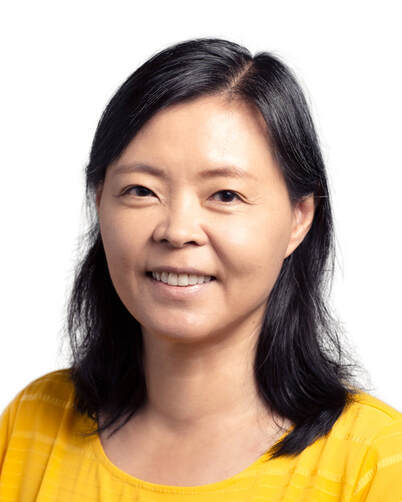Johanna Bayer and LAVINIA CARMEN USCATESCUDiscussing deep brain stimulation and brain connectivity with Keynote presenter Andreas Horn  Dr. Andreas Horn is a clinician-scientist with training in neuroimaging, movement disorders, and both invasive and noninvasive brain stimulation. He is the group leader of the transatlantic Network Stimulation Laboratory at Brigham & Women’s Hospital, Massachusetts General Hospital Boston and Charité – University Medicine Berlin. Dr. Horn’s research focuses on the development and improvement of methods to identify brain stimulation sites for studying network interactions and neuromodulation in the human brain. He is also the host of the podcast Stimulating Brains, focusing on brain stimulation. In this interview with Dr. Horn, we explore how deep brain stimulation can be used to better understand the human connectome, and how this work can be leveraged to improve patients’ lives. “In contrast to many other neuroimaging domains, there is a more or less direct translation [from Deep Brain Stimulation (DBS)] to clinical practice,” says Dr. Horn. For example, networks identified via DBS can be targeted with noninvasive stimulation methods such as multifocal transcranial direct current stimulation (tDCS) to improve conditions of patients with movement disorders like Parkinson's disease. Dr. Horn also provides insight into ongoing discussions in the field on whether structural or functional measures provide better predictions for DBS outcomes. He explains why his lab has gradually shifted away from using patient-specific connectivity data to precise normative connectomes for determining which brain networks should be modulated for maximal effects. In his keynote at OHBM 2023, Dr. Horn will give us a tour of his findings from years of work studying the effects of deep brain stimulation on the connectome across different disorders, ranging across neurological, neuropsychiatric, and psychiatric diseases. He will illustrate how his findings can be transferred across disorders to inform one another as well as how they can be further used to study neurocognitive effects and behaviors such as risk-taking and impulsivity. You can find the video interview here and listen to the audio-only podcast version here (or on your podcast app of choice).
0 Comments
Lavinia Carmen Uscatescu and Sin KimThe third entry in our 2023 Keynote Presenter series  Dr. Emma Robinson is a Senior Lecturer (Assoc. Professor) at King’s College London. Her development of the Multimodal Surface Matching (MSM) software for cortical surface registration has been instrumental to the development of the Human Connectome Project’s multimodal parcellation of the human cortex. She is currently developing interpretable machine learning models for personalized prediction of disease progression. In this interview, Dr. Robinson describes the advantages of interpretable machine learning models and the methodological challenges she faced during the development of this framework. Her approach to identifying disease-related changes in individual brain scans attempts to circumvent two limitations of traditional approaches: (1) the over-reliance on population averages; and (2) the opacity of “black-box” machine learning algorithms such as deep neural networks. However, her extensive experience working on the Human Connectome Project led her to realize that traditional image registration methods may not be sufficient for individualized predictions. In addition, Dr. Robinson shared how her relationship with her mentors shaped the trajectory of her current career. Her mentors not only guided her on the application of computational methods to neuroscience but also encouraged her to develop her own methods. At OHBM 2023, Dr. Robinson will present how her work contributes to improved personalized predictions of cortical features in patient populations and how interpretable machine learning approaches can enhance precision. You can find the video interview here and listen to the audio-only podcast version here (or on your podcast app of choice). Elisa Guma and Simon SteinkampContinuing our OHBM2023 keynote interview series  Dr. Emily Jacobs is an Associate Professor of Psychological & Brain Sciences and the director of the Ann S. Bowers Women’s Health Initiative at University of California, Santa Barbara. She received her PhD in Neuroscience at the University of California, Berkeley, and her BA in Neuroscience from Smith College. Prior to UCSB, she was an instructor at Harvard Medical School and at the Department of Medicine/Division of Women’s Health at Brigham & Women’s Hospital. In this interview, we discuss the pioneering work of Dr. Jacobs and her group in leveraging brain imaging, computation, and endocrine approaches to deepen our understanding of the influence of sex hormones on the central nervous system across spatial and temporal scales. Her group uses structural and functional neuroimaging methods to explore how the brain changes in response to endogenous hormonal changes, such as across the menstrual cycle, pregnancy, or menopause, as well as to exogenous hormones via oral hormonal contraceptives. Through the Ann S. Bowers Women’s Health Initiative, Dr. Jacobs and her group are working towards creating a population-level brain imaging dataset to advance our understanding of women’s brain health across the lifespan. Dr. Jacobs also shares her journey into neuroscience research, her thoughts on how science can inform public policy, and talks about her groups’ efforts to improve girls’ representation in STEM by partnering with K-12 groups. This work was featured in the book STEMinists: The Lifework of 12 Women Scientists and Engineers. At OHBM 2023, Dr. Jacobs will highlight the power of sex steroid hormones and the role that they play in shaping the brain over multiple timescales, drawing attention to some of the reasons why it has taken the field so long to focus on women’s brain health. You can find the video interview here and listen to the audio-only podcast version here (or on your podcast app of choice). What to Expect from the Diversity and Inclusivity Committee at The 2023 OHBM Annual Meeting6/13/2023 Alexander Barnett, Christienne Damatac, Eduardo A. Garza-Villarreal, Julia Kam, Lucina Uddin, and Maryam ZiaeiOn behalf of the OHBM Diversity & Inclusivity Committee At this year’s OHBM meeting in Montreal, cutting-edge technology and a commitment to diversity and inclusivity will converge in an array of events curated by the Diversity and Inclusivity Committee (DIC). We will showcase the transformative power of thoughtful methodology in enhancing accessibility to and fostering a sense of belonging in neuroscience and neuroimaging.
First, the 5th annual DIC symposium will feature a panel of experts on groundbreaking technological solutions for supporting our diverse global community. From revolutionizing accessibility for individuals with visual and auditory impairments to promoting inclusivity in neuroimaging studies, this symposium promises to inspire us to actively improve our own research to be more inclusive. Next, at the Multilingual Kids Review, we will engage young reviewers from diverse backgrounds in critically assessing a scientific presentation. Finally, the Diversity & Inclusivity Roundtable will focus on advancing diversity across multiple dimensions, examining strategies for organizing diverse symposia, educational courses, and brain hackathons. We hope you will join us as we explore how technology, diversity, and inclusivity intersect to shape the future of neuroscience and neuroimaging. Together, we can work towards creating a welcoming environment for OHBM’s diverse and international membership. Xinhui Li and Kevin SitekKicking off the 2023 Keynote Lecture Series
|
BLOG HOME
Archives
January 2024
|

 RSS Feed
RSS Feed